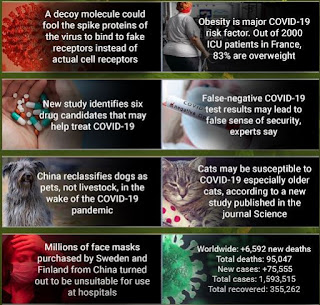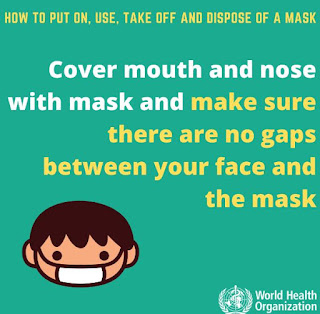Biosafety cabinet- What it is and different types
and how it can be used effectively?
Basically a
biosafety cabinet is a micro-biosafety cabinet that is also called a biological
safety cabinet, where it is mostly enclosed with ventilated laboratory
workspace for pathogens.
The main use is to protect the people working with
laboratory pathogens. All exhaust air
has HEPA filters(high-efficiency particulate air) that remove harmful viruses
and bacteria. HEPA filters were commercialized in the 1950s.
It is similar to that of the laminar flow chamber,
but this blows unfiltered air towards the user and considered to be safe for
working with pathogenic agents.
Types of BSLs:
The U.S
Centers for Disease Control and Prevention classified into four
types
BSL-1
|
BSL-2
|
BSL-3
|
BSL-4
|
This
type of cabinet provides environmental and personal protection but fails to
provide product protection.
This
type is used in case of working with non-causative microbes to humans.
Eg:
E.coli
|
This
is suitable to work with pathogens that cause moderate harm to the
environment and personal.
An example includes the HIV virus, hepatitis
A, B, C virus.
|
This
type is used in serious pathogens to the environment that includes
Mycobacterium tuberculosis, SARS coronavirus.
All
laboratory workers will be under medical surveillance and must wear personal
protective equipment while inside the cabinet.
|
This
is the highest level of safety cabinet. In this highly transmitted pathogens
such as Ebola, Nipah, flavivirus work will be taking place.
High
safety and precautions measures will be taken inside this type of cabinet.
|
Currently, India has
3 BSL-4 laboratories they are
- High-Security Animal Disease Laboratory(HSADL), Bhopal
- Centre for Cellular and Molecular Biology(CCMB), Hyderabad
- National Institute of Virology, Pune
The COVID-19 is an airborne virus. Let us see what is an airborne virus and different types of it.
Airborne virus: This a type of virus that can be
transmitted via aerosols and people get infected.
Different types include
1. Measles:
This virus can stay up to 2 hours in the air and infected people can
exhale around 5000 viral particles into an hour. This virus kills around
2,00,000 every year
2. Influenza: This virus is very small and it can
stay at least an hour in the air. It is Influenza A that is responsible for Flu
in humans. Around 500,000 deaths are due to the influenza virus every year
across the globe.
3. SARS-COV-2:
COVID-19 can stay up to 3 hours actively in the air. It varies with
different surfaces.
4. Chicken Pox: A herpes virus called Varicella
zoster causes chickenpox, it can stay up to several hours in the air. This
virus causes a rash that turns into blisters. It takes up to 2-3 weeks for a
pox to appear.
5. Swine Flu: This flu is caused by the H1N1 virus
that causes a respiratory infection in humans. The droplets spread about 3 feet
and remain in the air up to 2 to 8 hours.
6. Mumps: It is caused by the Rubula virus. This
virus spread through sneeze and cough. It mostly affects the salivary gland,
due to swelling as a result of infection.
7. Rubella Virus: This virus spreads through close
contact with an infected person. It causes slight fever, mild rash and swollen
glands. Humans are the only host for the rubella virus.



































